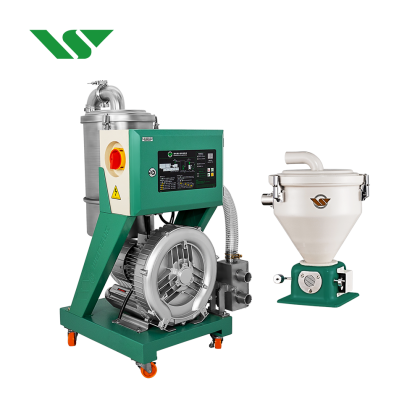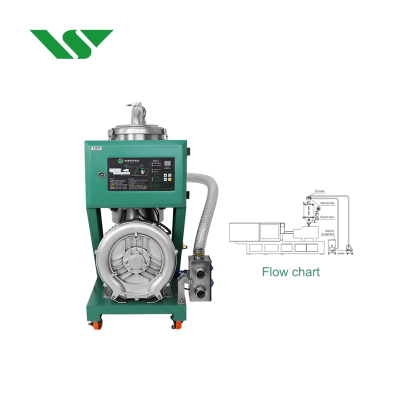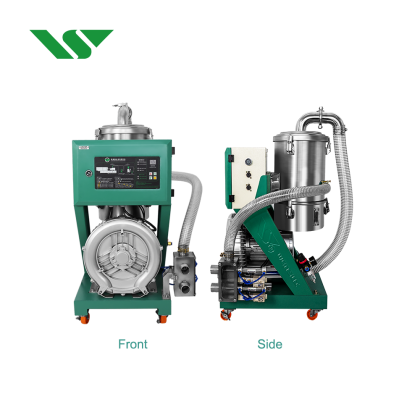The Role of Automated Feeding Systems
2024-10-29 Page view:
Overview of Automated Feeding Systems
An automated feeding system utilizes industrial computers to centrally control all machinery centrally, enabling continuous 24-hour feeding operations across all material units. These systems work seamlessly with each machine's specialized functions, effectively supporting tasks such as dehumidification, drying, transportation, metering, and mixing of raw materials. With advanced monitoring and protection features, the automatic particle feeding system is safe and reliable and forms the backbone for creating unmanned chemical plants. Here are the core benefits of a centralized feeding system:

Key Benefits of a Central Feeding System
Cost Efficiency: Reduces labor and raw material costs, with a service life exceeding 10 years.
Centralised Material Management: Minimises waste and contamination.
Environmental Benefits: Maintains a clean workspace and supports environmental regulations.
Quality Consistency: Enhances product quality and boosts output, sustaining a high-quality production system.
Corporate Image: Improves brand reputation, attracting customer partnerships.
Features of the Injection Moulding Particle Feeding System
Advanced Control: Utilises Mitsubishi's original PLC and A970 color touch screen.
High-Temperature Closed Loop: Ensures that engineering plastics are transported at high temperatures, preventing moisture regain.
Evacuation Design: Prevents residual material build-up in the pipeline. Food-Grade Polished Tubing: Minimises dust during raw material transport.
Enhanced Pipe Durability: Features 1.5 mm delivery pipes and carbonized elbows for greater hardness, ideal for GF engineering plastics.
Centralized Material Control: Saves energy and reduces costs.
Cooling Dust Collector: A patented design cools high temperatures generated in the closed loop, extending the system's lifespan by over a decade.

Injection Moulding Feeding System Design
The injection molding feeding system is tailored to each client's machinery layout and raw material requirements alongside specific auxiliary equipment. This system achieves centralized feeding and control, facilitating uninterrupted, uncrewed factory operations and providing a fully integrated solution for molding processes.
Central Feeding System Control
The central control element manages incoming signals from various work units, and relays command to execution units, acting as the 'brain' of the central feeding system, crucial for its stability and performance.
Automated Feeding System Components
Conveying Control: Includes a suction box, material-cutting suction box, material selection station, on-site pipelines, and a secondary material-cutting valve. The suction box transports raw materials from the dryer or storage to the suction machine, while the material-cutting suction box facilitates material cleaning to prevent leftover residues, using anti-static pipe clamps to reduce static.
Control Box: Equipped with Siemens PLC and a user interface, this box ensures safe and stable system operation.
Power Supply: Incorporates vacuum motors, dust collectors, and pressure relief valves to provide system power, allowing the system to perform various suction tasks.
Raw Material Control: Includes dryers, dehumidifiers, and storage barrels, which dehumidify and dry materials to meet product specifications, improve quality, and reduce defect rates while optimizing production cycles.

Terminal Units The automated system's terminal equipment includes the central hopper and two-material proportional valve, which collaborates with pulverizers to meet specific requirements for mixing new and recycled materials.
Applications of the Automated Feeding System Designed for the automated transportation of raw materials in chemical and food production, this system integrates precise input of powders and granules, manages inflow during reactions, and controls discharge. Using Mitsubishi firmware, it creates a high-performance control platform known for stable operation, ease of use, and cost-efficiency.
This comprehensive automation system optimizes the entire raw material handling process, ensuring precision, efficiency, and scalability in production.



